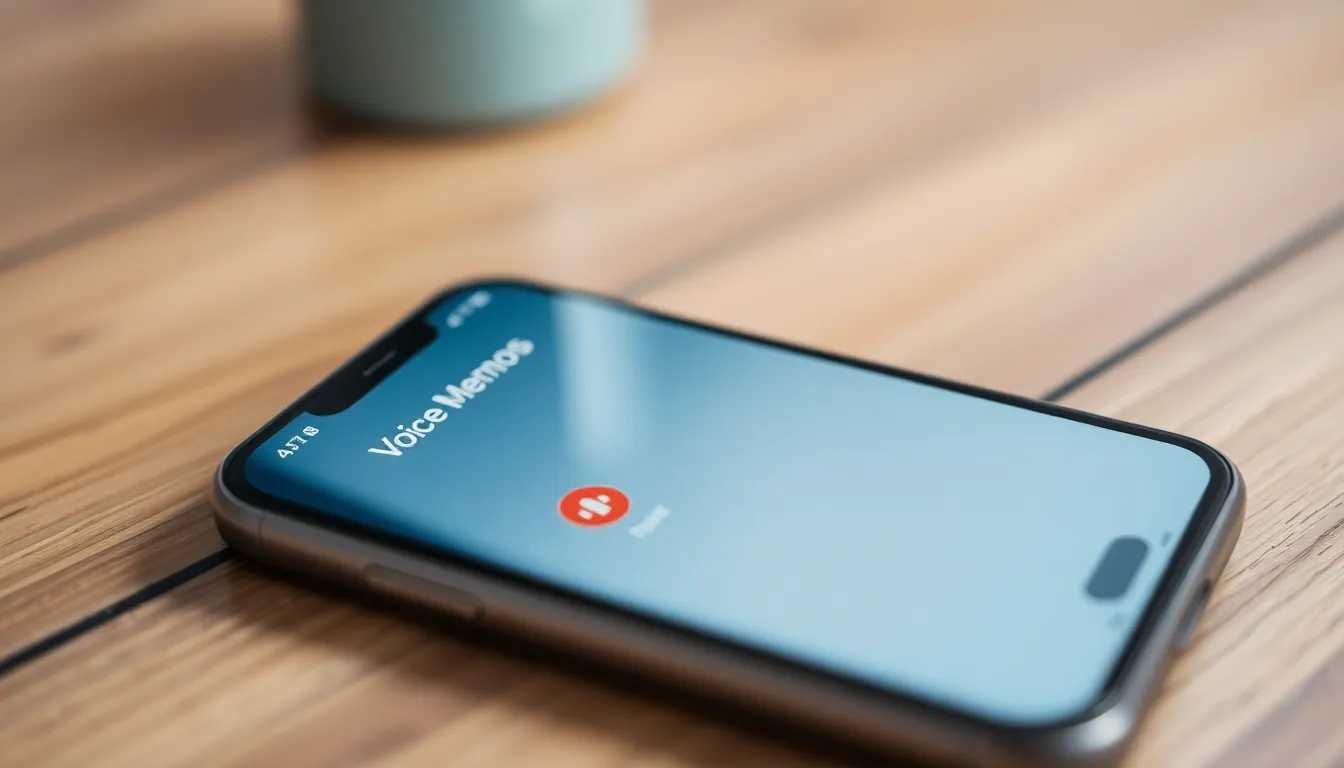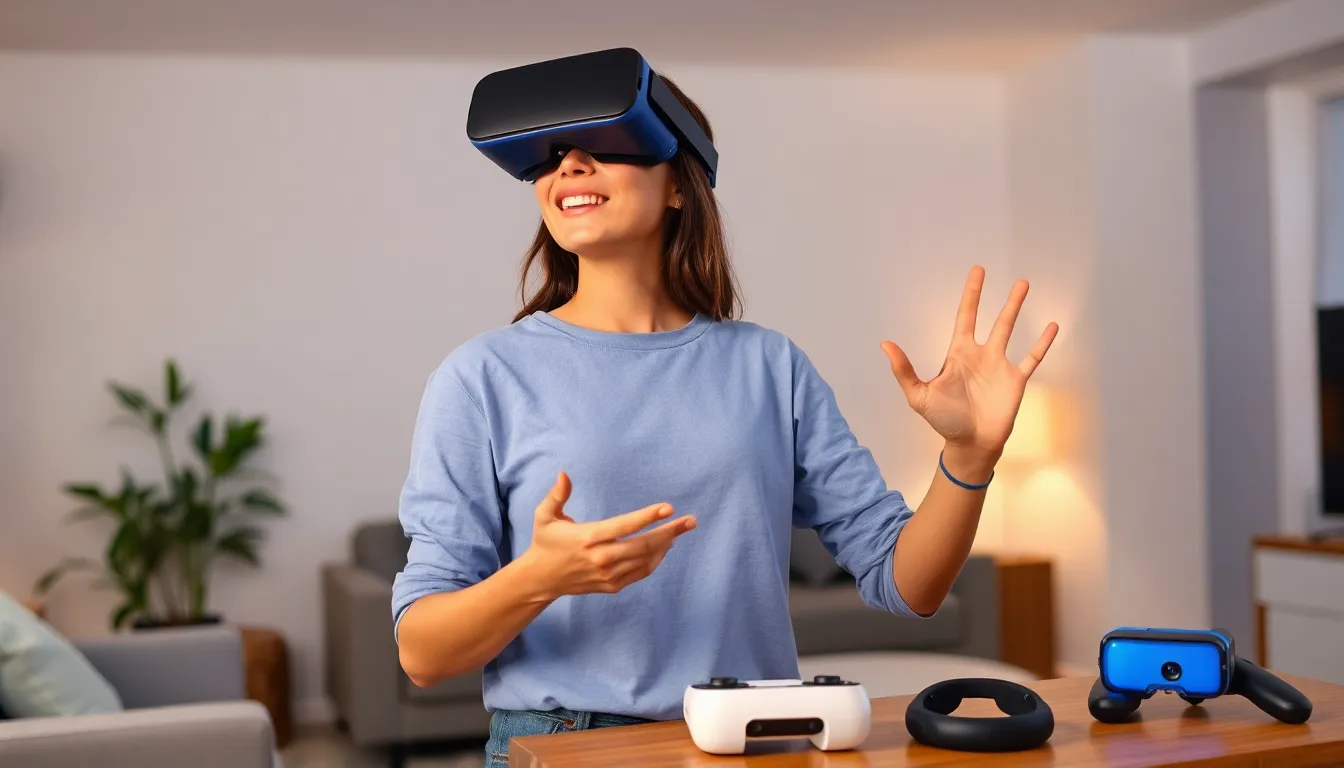In a world where every conversation could be a potential podcast episode, knowing how to record conversations on an iPhone can turn everyday chatter into memorable moments. Whether you’re capturing the wisdom of a grandparent or the latest gossip from your best friend, it’s like having a personal recording studio right in your pocket.
But let’s face it—navigating through settings and apps can feel like trying to find a needle in a haystack. Fear not! With just a few taps, you can unlock the secrets of iPhone recording. So grab your device, and let’s dive into the simple steps that’ll have you recording like a pro in no time. After all, who wouldn’t want to relive those hilarious misadventures or heartwarming stories?
Table of Contents
ToggleUnderstanding iPhone Conversation Recording
Recording conversations on an iPhone involves specific features and applications. Various methods exist for capturing audio, each with distinct functionalities. Built-in apps like Voice Memos allow users to record quickly and easily, thanks to user-friendly interfaces. Third-party apps, such as Rev and TapeACall, offer additional features, including transcription services and cloud storage options.
Privacy considerations play an important role in conversation recording. Users must comply with local laws concerning consent before recording any conversation. In most states, at least one party must agree to the recording. Knowing the applicable regulations ensures that users avoid legal issues.
Selecting the right microphone enhances recording quality. iPhones come with built-in microphones that suffice for casual recordings. However, external microphones offer better sound clarity, especially in noisy environments. Investing in a quality microphone may yield significant improvements in audio fidelity.
Managing recordings involves organizing files properly. Users can rename audio files within apps for easier retrieval. Cloud services allow convenient access to recordings from multiple devices. Backing up important audio files safeguards memories against device loss.
Sharing recorded conversations occurs through several channels. Users can send files via email or messaging apps. Additionally, many recording apps feature direct sharing options to social media platforms. Utilizing these sharing tools fosters collaboration and communication.
Adopting a systematic approach enables users to make the most out of their recording experiences. Experimenting with settings can improve audio quality. Prioritizing important conversations for recording helps capture essential moments.
Built-In iPhone Features

Recording conversations on an iPhone can utilize several built-in features. Two prominent options are the Voice Memos app and the Notes app.
Voice Memos App
The Voice Memos app provides a straightforward way to record audio. Users can access this app directly from the home screen or through the control center. Starting a recording is as simple as tapping the red record button. Once finished, saving the recording is crucial; it automatically saves under the date and time. Additionally, users can edit recordings by trimming audio clips as needed. For easy organization, the app allows labeling recordings with descriptive titles, enhancing quick access later. Users can share recordings via email, messaging apps, or social media platforms directly from the app.
Notes App
The Notes app also offers a feature to record conversations. Users can create a new note and tap the microphone icon to start recording audio. This method combines voice notes with text, making it convenient to jot down thoughts or additional context. User-organized notes can enhance discussion summaries or important points. Recordings save automatically within the note, allowing for easy retrieval. Users can share their notes, which include recordings, through email or collaboration tools. This functionality makes the Notes app an excellent choice for those who want to integrate recording with other information seamlessly.
Third-Party Apps
Third-party apps enhance the conversation recording experience on an iPhone. These applications provide additional features beyond the built-in options.
Recommended Apps for Recording
Rev offers transcription services, allowing users to turn spoken words into written text. TapeACall includes unlimited recordings, making it ideal for lengthy conversations. Call Recorder uses a three-way call system to capture audio, ensuring clear sound quality. Each of these apps provides various functionalities, so choosing one depends on user needs like transcription or storage.
Comparing Features and Usability
Rev excels in transcription accuracy, appealing to those who value quick text conversion. TapeACall prioritizes user-friendliness with its straightforward interface, simplifying the recording process. Call Recorder differentiates itself with robust features like cloud backup, catering to users who prefer secure storage. Considering these differences assists users in selecting the right app based on specific recording needs and preferences.
Legal Considerations
Recording conversations on an iPhone involves legal implications. Different states impose varying consent laws that users must understand clearly.
Understanding Consent Laws
Consent laws dictate whether it’s lawful to record a conversation. In some states, one-party consent allows recording if one participant agrees. Other locations require all parties to consent explicitly before any recording occurs. Always check local regulations to ensure compliance. Violating consent laws can lead to severe penalties, including fines or legal action. Being informed about these laws helps users avoid potential legal issues while capturing conversations.
Best Practices for Recording Conversations
Implementing best practices enhances both the quality and legality of recordings. Confirm consent from all parties involved to foster trust and ensure compliance with laws. Select a quiet environment to improve audio clarity and minimize background noise. Clearly label recordings with descriptive titles for easier organizational access later. Utilize the iPhone’s features to pause and resume recordings as needed, capturing only essential parts. Regularly review recordings for quality and relevance, ensuring they meet your needs before sharing them with others. Following these practices leads to more effective and respectful conversation recordings.
Tips for Clear Recording
Clear recordings depend on the environment and settings. Ensuring optimal conditions enhances audio quality significantly.
Optimizing Your Environment
Select a quiet location for recording conversations. Background noise can distort sounds and make important details hard to hear. Avoid areas with echoing surfaces, such as empty rooms or hallways. Instead, opt for spaces with soft furnishings that absorb sound. If outdoors, choose times with minimal wind and fewer distractions. Proximity to the person speaking also matters. Sitting close allows for better capture of voices, reducing the impact of external noise.
Adjusting Settings for Quality
Using the right settings on the iPhone boosts recording clarity. Open the Voice Memos app and tap the settings icon, where users can adjust audio quality to high. Selecting the correct format also influences sound fidelity; choose uncompressed formats for maximum clarity. Normalizing audio levels ensures even volume across the recording, enhancing listening experience. Regularly testing different configurations sets the stage for future recordings. Ensure Airplane mode is on during recording to prevent interruptions.
Recording conversations on an iPhone opens up a world of possibilities for capturing moments that matter. With the right tools and knowledge, anyone can easily document important discussions or cherished memories. By utilizing built-in apps like Voice Memos and exploring third-party options, users can tailor their recording experience to fit their needs.
Understanding the legal aspects and best practices ensures a respectful approach to capturing conversations. With attention to audio quality and environment, users can achieve clear recordings that are enjoyable to revisit. Embracing these techniques not only enhances the recording process but also enriches the overall experience of connecting with others.




